Abstract
Ethylene oxide and 1,2-propylene oxide were each administered intragastrically by gavage at 2 dosages (30 and 7.5 mg/kg body wt; 60 and 15 mg/kg body wt respectively) to groups of 50 female Sprague-Dawley rats twice weekly for a period of nearly 3 years using salad oil as the solvent. Both compounds induced local tumours, mainly squamous-cell carcinomas of the forestomach, dependent on the dosage. The first tumour occurred in the 79th week both in the group treated with ethylene oxide and in that treated with 1,2-propylene oxide. The following tumour rates resulted: ethylene oxide 62 and 16%; 1,2-propylene oxide 40 and 4%. In addition carcinomata in situ, papillomas and reactive changes of the squamous epithelium of the forestomach were observed in other animals, but neither ethylene oxide nor 1,2-propylene oxide induced tumours at sites away from the point of administration.
Full text
PDF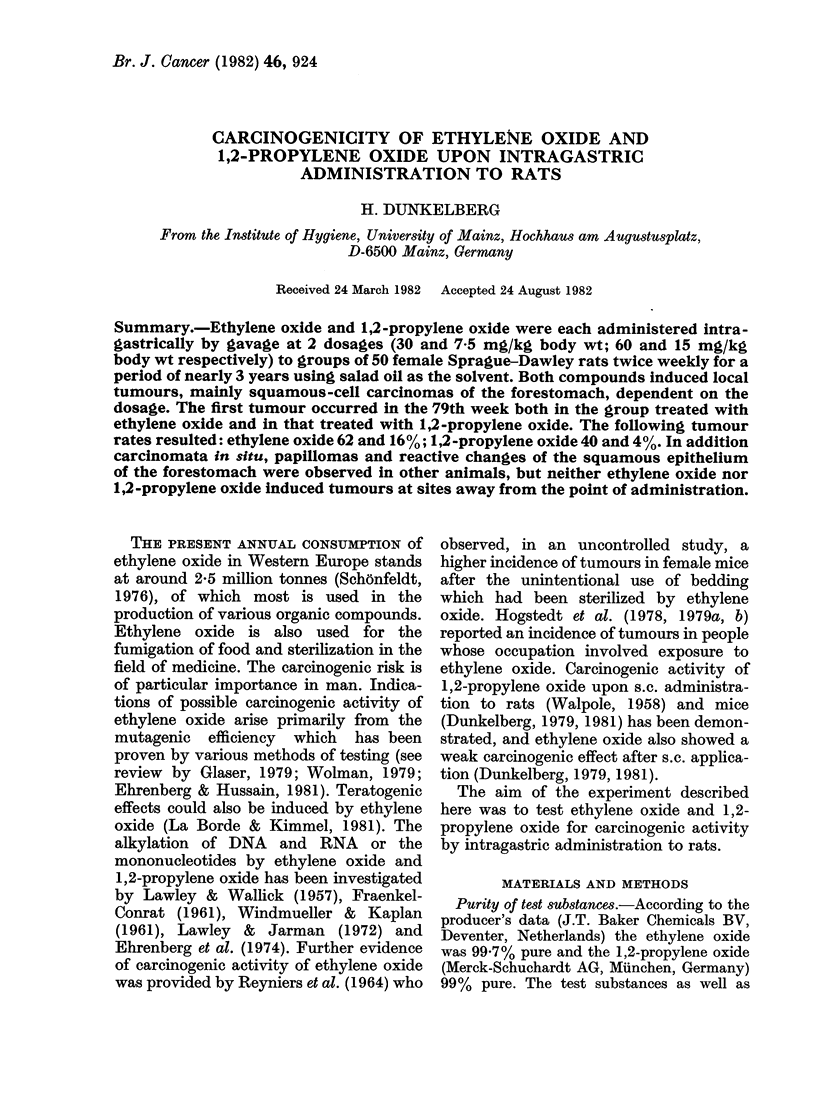
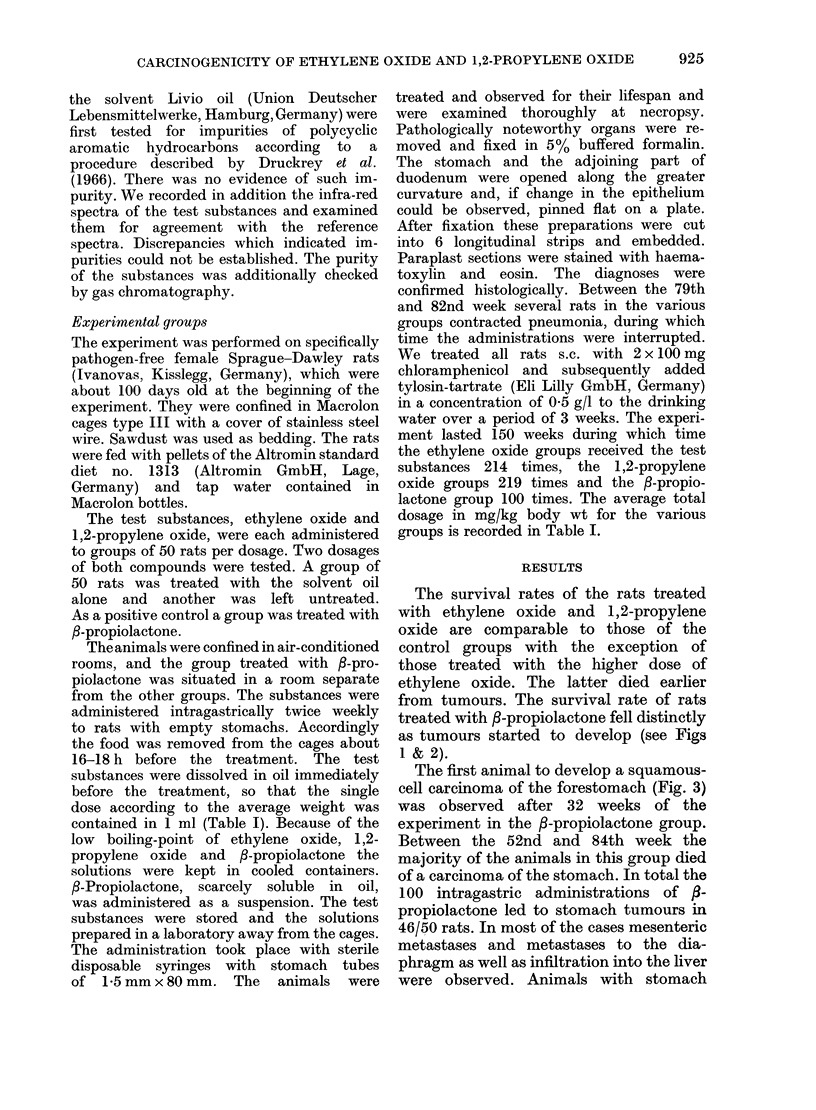
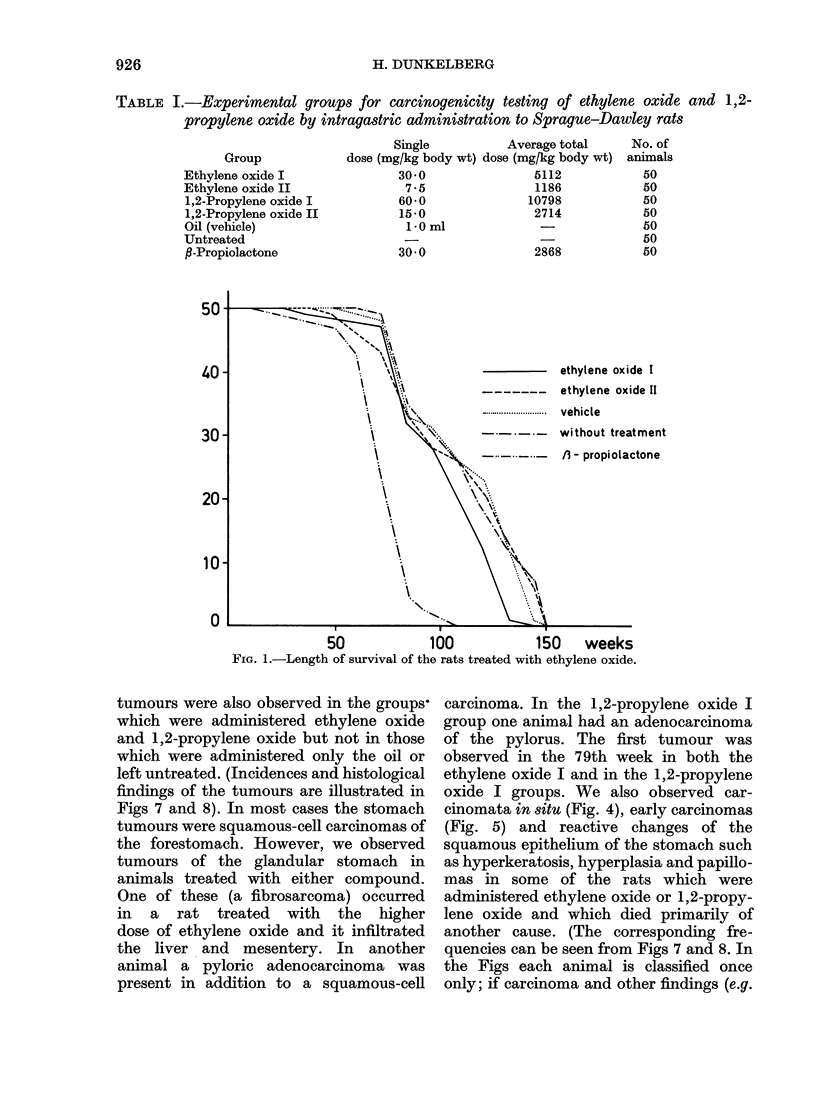
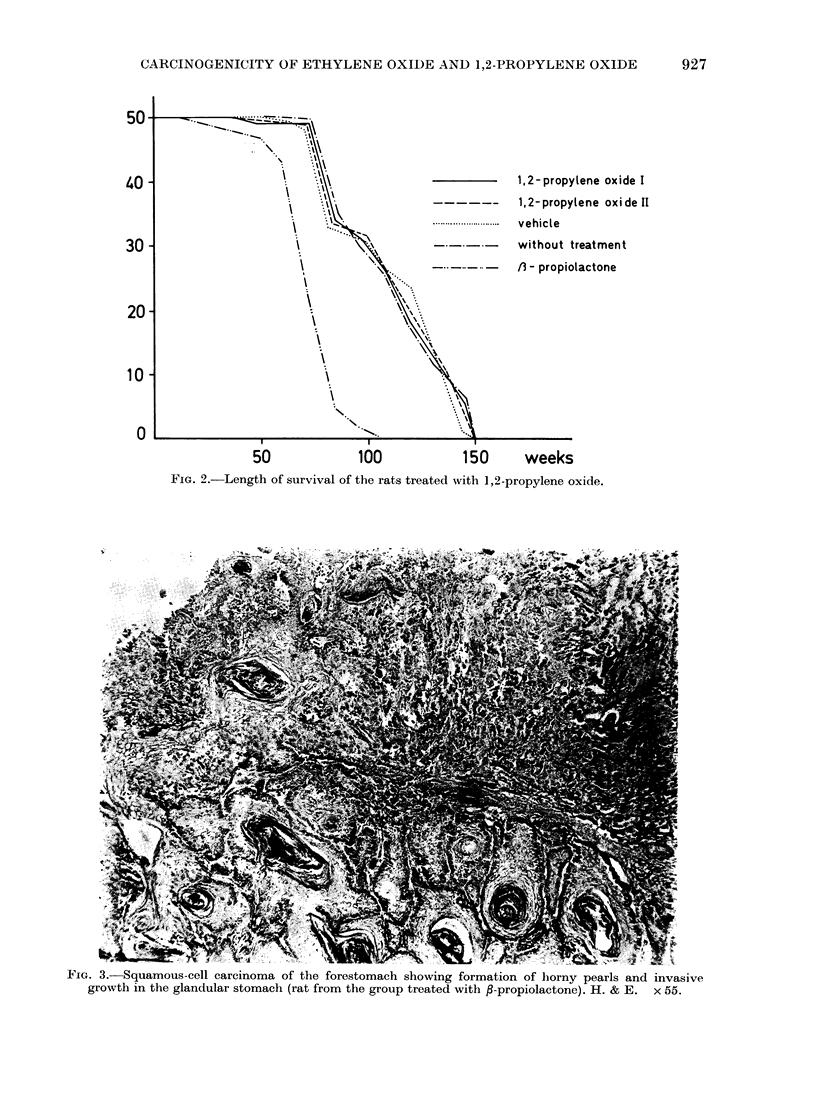
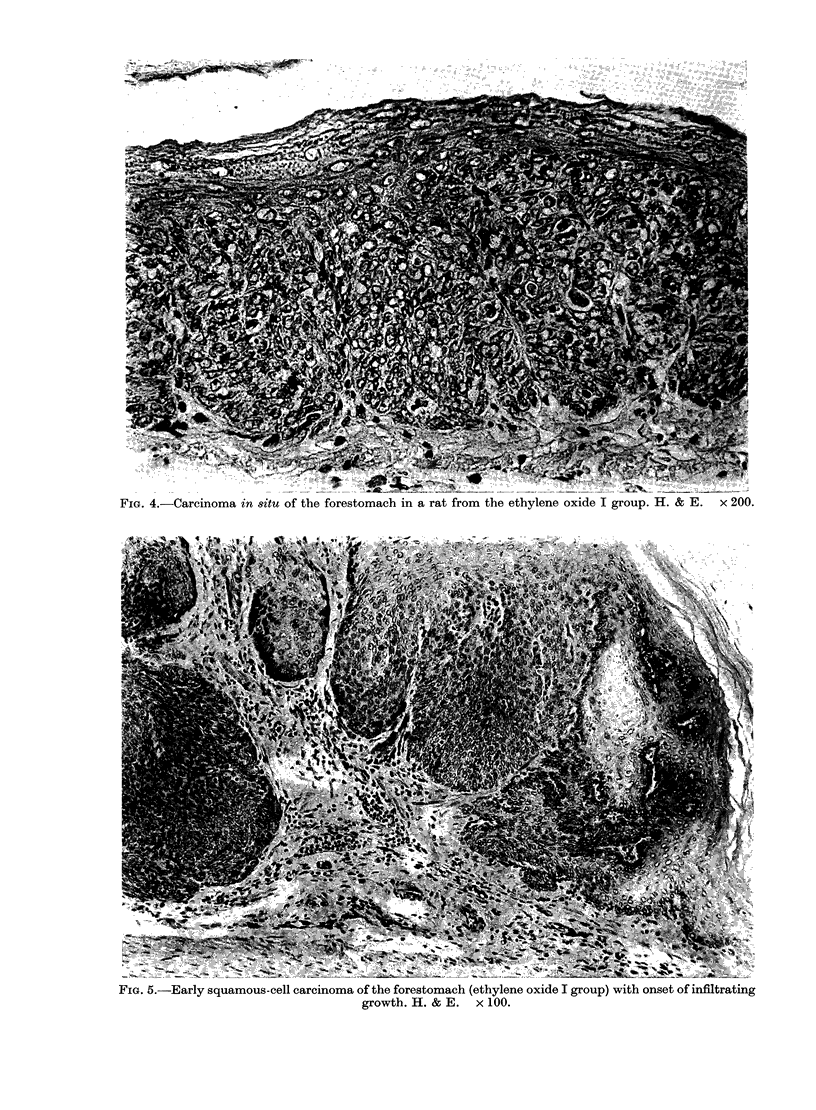
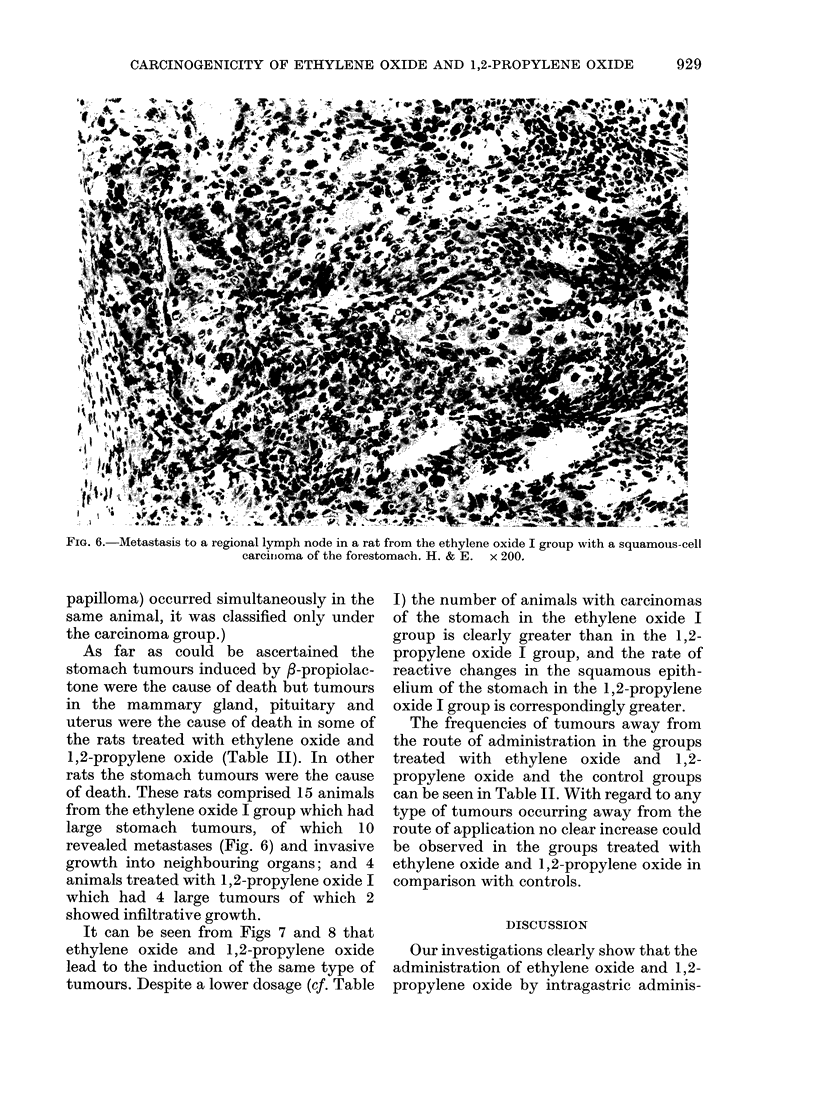
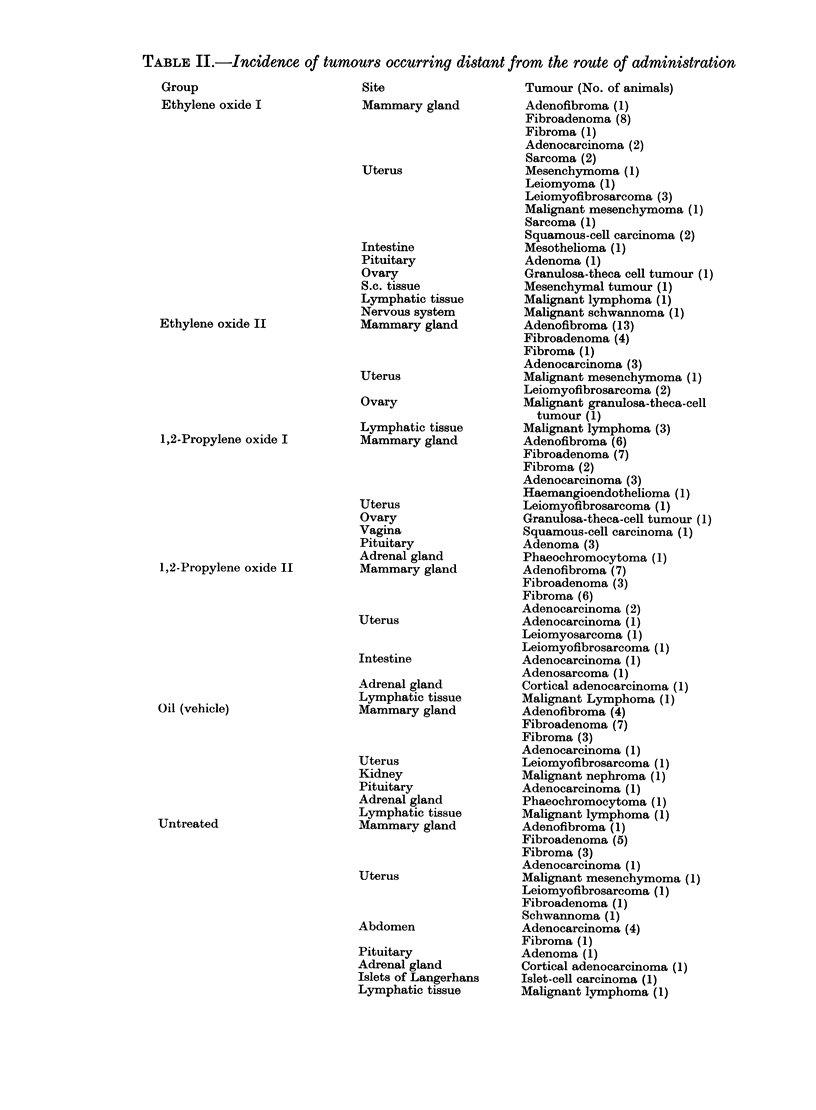
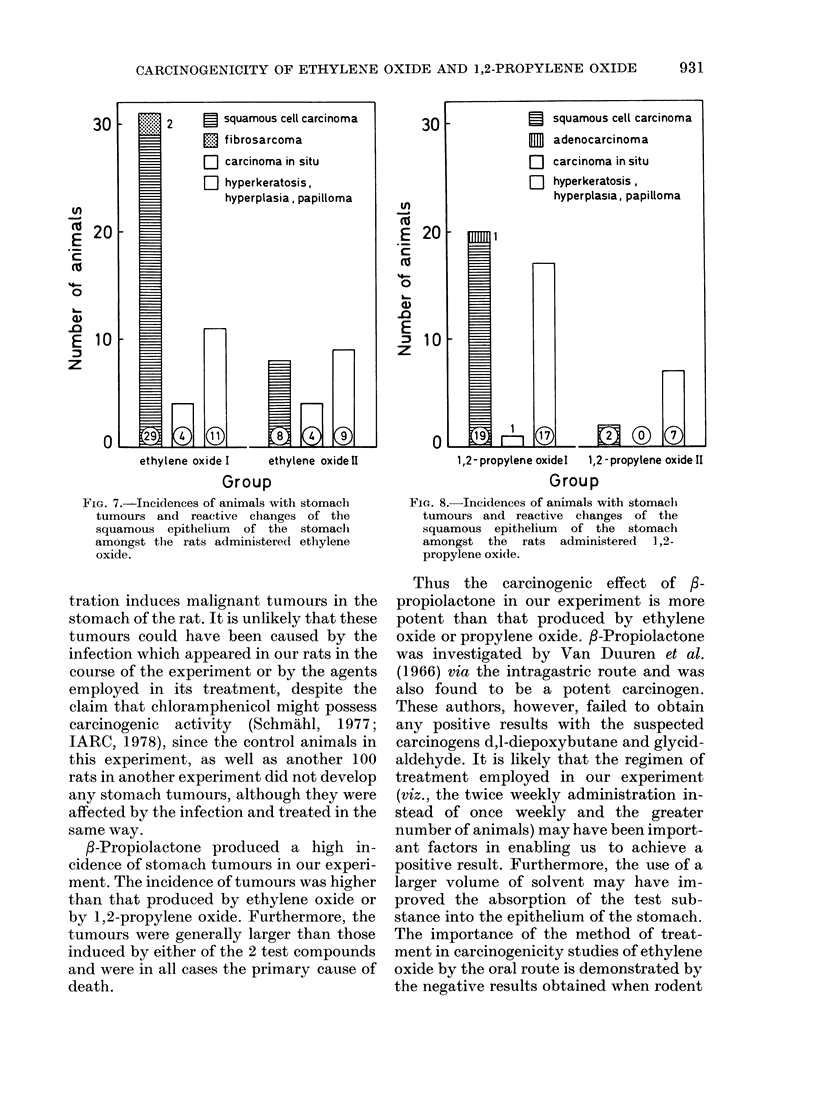
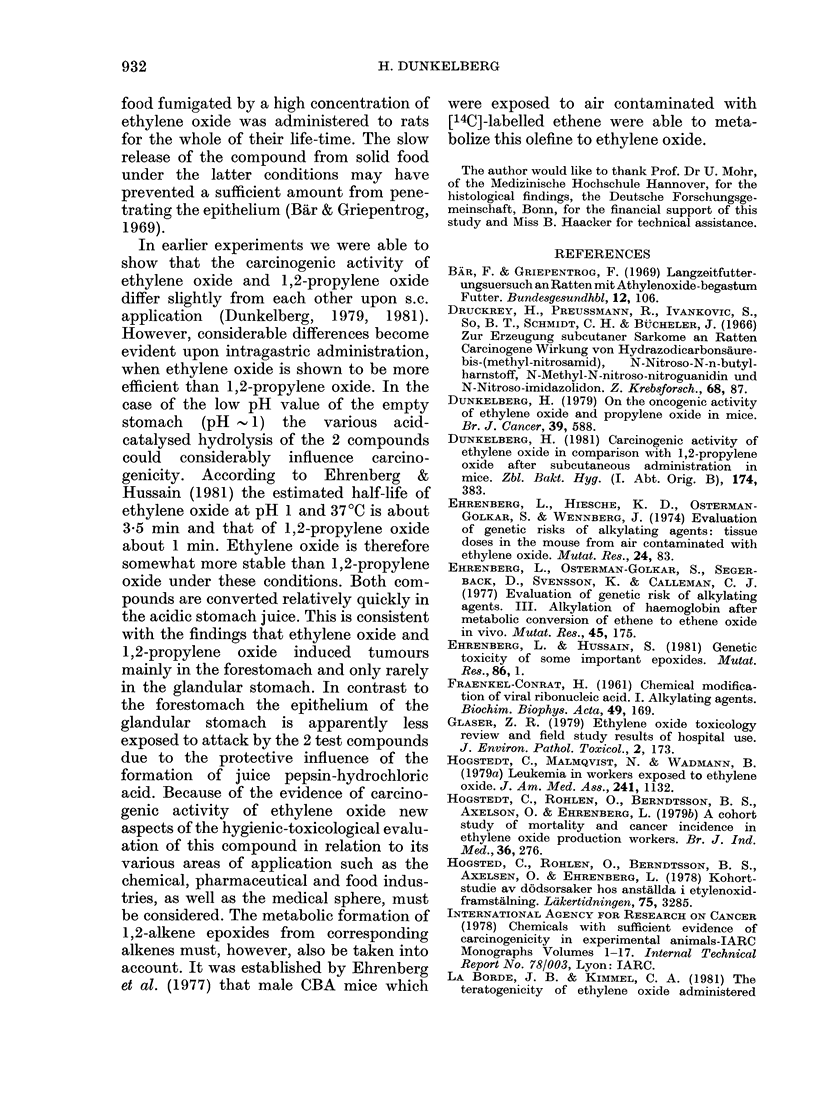
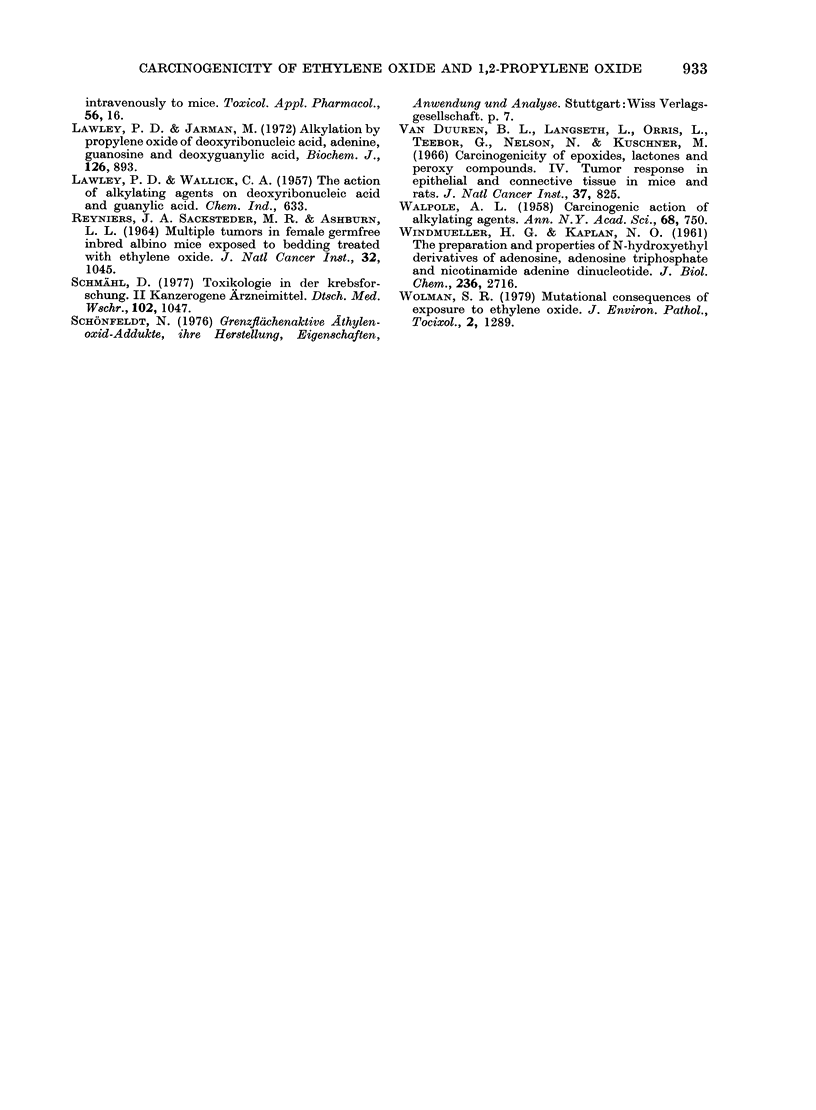
Images in this article
Selected References
These references are in PubMed. This may not be the complete list of references from this article.
- Druckrey H., Preussmann R., Ivankovic S., So B. T., Schmidt C. H., Bücheler J. Zur Erzeugung subcutaner Sarkome an Ratten. Carcinogene Wirkung von Hydrazodicarbonsäure-bis-(methyl-nitrosamid), N-Nitroso-N-n-butyl-harnstoff, N-Methyl-N-nitroso-nitroguanidin und N-Nitroso-imidazolidon. Z Krebsforsch. 1966;68(1):87–102. [PubMed] [Google Scholar]
- Dunkelberg H. Kanzerogene Aktivität von Ethylenoxid und seinen Reaktionsprodukten 2-Chlorehtnaol, 2-Bromethanol, Ethylenglykol und Diethylenglykol. I. Kanzerogenität von Ethylenoxid im Vergleich zu 1,2-Propylenoxid bei subkutaner Applikation an Mäusen. Zentralbl Bakteriol Mikrobiol Hyg B. 1981 Dec;174(5):383–404. [PubMed] [Google Scholar]
- Dunkelberg H. On the oncogenic activity of ethylene oxide and propylene oxide in mice. Br J Cancer. 1979 May;39(5):588–589. doi: 10.1038/bjc.1979.106. [DOI] [PMC free article] [PubMed] [Google Scholar]
- Ehrenberg L., Hiesche K. D., Osterman-Golkar S., Wenneberg I. Evaluation of genetic risks of alkylating agents: tissue doses in the mouse from air contaminated with ethylene oxide. Mutat Res. 1974 Aug;24(2):83–103. doi: 10.1016/0027-5107(74)90123-7. [DOI] [PubMed] [Google Scholar]
- Ehrenberg L., Hussain S. Genetic toxicity of some important epoxides. Mutat Res. 1981 Jan;86(1):1–113. doi: 10.1016/0165-1110(81)90034-8. [DOI] [PubMed] [Google Scholar]
- Ehrenberg L., Osterman-Golkar S., Segerbäck D., Svensson K., Calleman C. J. Evaluation of genetic risks of alkylating agents. III. Alkylation of haemoglobin after metabolic conversion of ethene to ethene oxide in vivo. Mutat Res. 1977 Nov;45(2):175–184. doi: 10.1016/0027-5107(77)90017-3. [DOI] [PubMed] [Google Scholar]
- FRAENKEL-CONRAT H. Chemical modification of viral ribonucleic acid. I. Alkylating agents. Biochim Biophys Acta. 1961 Apr 29;49:169–180. doi: 10.1016/0006-3002(61)90880-0. [DOI] [PubMed] [Google Scholar]
- Glaser Z. R. Ethylene oxide: toxicology review and field study results of hospital use. J Environ Pathol Toxicol. 1979 May-Jun;2(5):173–208. [PubMed] [Google Scholar]
- Hogstedt C., Malmqvist N., Wadman B. Leukemia in workers exposed to ethylene oxide. JAMA. 1979 Mar 16;241(11):1132–1133. [PubMed] [Google Scholar]
- Hogstedt C., Rohlén O., Berndtsson B. S., Axelson O., Ehrenberg L. A cohort study of mortality and cancer incidence in ethylene oxide production workers. Br J Ind Med. 1979 Nov;36(4):276–280. doi: 10.1136/oem.36.4.276. [DOI] [PMC free article] [PubMed] [Google Scholar]
- LaBorde J. B., Kimmel C. A. The teratogenicity of ethylene oxide administered intravenously to mice. Toxicol Appl Pharmacol. 1980 Oct;56(1):16–22. doi: 10.1016/0041-008x(80)90127-1. [DOI] [PubMed] [Google Scholar]
- Lawley P. D., Jarman M. Alkylation by propylene oxide of deoxyribonucleic acid, adenine, guanosine and deoxyguanylic acid. Biochem J. 1972 Feb;126(4):893–900. doi: 10.1042/bj1260893. [DOI] [PMC free article] [PubMed] [Google Scholar]
- REYNIERS J. A., SACKSTEDER M. R., ASHBURN L. L. MULTIPLE TUMORS IN FEMALE GERMFREE INBRED ALBINO MICE EXPOSED TO BEDDING TREATED WITH ETHYLENE OXIDE. J Natl Cancer Inst. 1964 May;32:1045–1057. [PubMed] [Google Scholar]
- Van Duuren B. L., Langseth L., Orris L., Teebor G., Nelson N., Kuschner M. Carcinogenicity of epoxides, lactones, and peroxy compounds. IV. Tumor response in epithelial and connective tissue in mice and rats. J Natl Cancer Inst. 1966 Dec;37(6):825–838. [PubMed] [Google Scholar]
- WALPOLE A. L. Carcinogenic action of alkylating agents. Ann N Y Acad Sci. 1958 Apr 24;68(3):750–761. doi: 10.1111/j.1749-6632.1958.tb42638.x. [DOI] [PubMed] [Google Scholar]
- WINDMUELLER H. G., KAPLAN N. O. The preparation and properties of N-hydroxyethyl derivatives of adenosine, adenosine triphosphate, and nicotinamide adenine dinucleotide. J Biol Chem. 1961 Oct;236:2716–2726. [PubMed] [Google Scholar]
- Wolman S. R. Mutational consequences of exposure to ethylene oxide. J Environ Pathol Toxicol. 1979 Jul-Aug;2(6):1289–1303. [PubMed] [Google Scholar]






